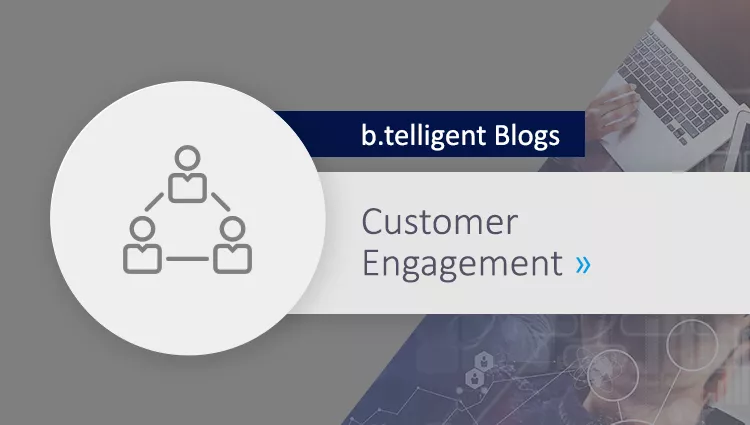It's a done deal: The digital product passport (DPP) is coming. It's quite an elaborate affair, but also a huge opportunity for marketing and sales! As part of a planned Ecodesign Directive, the EU will, from 2027, oblige companies in almost all sectors which manufacture, commission or sell goods and products in the EU to introduce the DPP. Experts predict that five trillion DPPs will be issued annually across the EU in the future. This figure gives an idea of the implications of the EU's decision. Which legally mandatory information the DPP must contain is still being clarified. But one thing is already clear: The DPP will massively change the economy – and in doing so, it offers a completely new touchpoint to the customer.
The digital product passport is a new data hub
The DPP will be a digital data hub representing the entire value chain. Technologically, the DPP comprises a forgery-proof NFC chip or QR code integrated directly into the product or applied to it. The passport ensures transparency and traceability – that is, precise traceability down to the level of individual items. Thanks to it, the lifecycle of each product can be traced seamlessly. Processed resources are documented and identifiable on the basis of valid data.
For companies engaged in professional management of information and data, introduction of the DPP will be almost child's play.
The DPP as an excellent touchpoint to the customer
The DPP is an excellent information and communication tool which opens up completely new possibilities for marketing. Content can be played out via text, images and video; chat functions and social-media interfaces can be integrated, just as access to online shops or automated ordering options. In short, the DPP makes products capable of dialogue and thus ready for data-based one-to-one communication between manufacturers and consumers, thereby enabling direct relationships with the latter. Manufacturers obtain top-class 1st-party data on how their product is being used; if the buyer gives their consent, highly individualized communication is possible.
Especially in view of the termination of 3rd-party cookies, DPPs are an excellent source of valuable insights – if product buyers provide their consent, proprietors of brands will be able to know who is doing what with their products when. This knowledge enables companies to individualize their products and offers the opportunity to bind valued customers closely to the brand. Products can be manufactured according to the highly personal wishes of brand fans more easily than ever before.
How to handle DDP: 5 steps to a digital product passport
#01: Create a product passport
The best way to generate the information for the DPP of individual products, items or batches is via a dedicated publishing system for digital product passports. With the help of the publishing system, all types of digital product passports can be furnished with all conceivable multimedia information. For this purpose, companies either build their own technical solutions or use solutions known as "digital product passport as a service" for their DPP.
As a prerequisite for the DPP, companies must have at least all the legally required data. For information on supply chains, for example, valid data must be obtained, structured and processed by all participants in the value chain. This doesn't work without efficient digital processes.
Important: A DPP must ensure interoperability for all participants. The passport must speak everyone's language, as it were.
#02: Publish the product passport
Each DPP is reported to the EU Commission. The EU Commission is planning a reliable, central product-passport register. Standards according to which the DPP and its versions and updates are to be stored digitally are currently being prepared.
#03: Integrate the product passport into products
Data are input as part of production. This is particularly challenging when production is scattered all over the world. The DPPs are invisibly integrated in the form of tiny NFC chips into the products themselves or into their packaging. An alternative to NFC chips are QR/bar codes. In any case, the DPP must be machine-readable. Both technologies will ultimately be employed.
#04: Maintain the product passport
With the help of a publishing system, companies can, at any time and from anywhere, update the DPP, change the design, integrate discount and special promotions, or offer cycle-oriented trade-ins.
#05: Start interaction
A basis for digital customer relationships has thus been formed. From then on, the product can communicate with customers – in matters ranging from tips on use, through information on sustainability activities and interesting additional offers, right up to entertaining moving-image formats or advice on how to resell the product lucratively.
Which product needs which DPP?
DPP's are individualized according to the respective products. For example, if a company produces a single batch of 100,000 identical plastic sandals, all of which follow the same supply chain, one product passport is sufficient for all individual items. For example, however, if the company manufactures shoes to individual order and by hand, with a separate supply chain existing for each component, then each pair of shoes needs its own DPP.
Who in the company takes care of the DPP?
Companies which see the DPP as a mere obligation are likely to form a team from the IT, purchasing and legal departments.
However, companies seeing the DPP as a direct customer interface will include professionals from marketing, communication and sales in the team and enter into a creative dialogue with customers. In both cases, sustainability and CSR managers should definitely be brought on board as well.
And consumers? It will be easy for them.
Consumers only need to hold their smartphone in front of the product, whereupon all product details appear on the display within a second.
Takeaways
What the DPP can do with the help of data:
• Document the complete life cycle of a product.
• Enable transparency and services.
• Create direct contact between manufacturers and consumers.
What the DPP offers users:
• Enabling consumers to make more informed purchasing decisions.
• Additional information on how to use products.
• Dialogue- based relationships with brands.
Why the DPP boosts data-driven marketing:
• Provision of excellent 1st-party data,
– anonymized
– and individualized following registration.
• Empowering companies for one-to-one marketing.
• Possibility of direct-to-consumer distribution.
• New opportunities for retail media.
The digital product passport is a completely new touchpoint and enlightening analytics tool. Our whitepaper shows you how  and b.telligent can assist you in implementation.
and b.telligent can assist you in implementation.
Contact us here!











